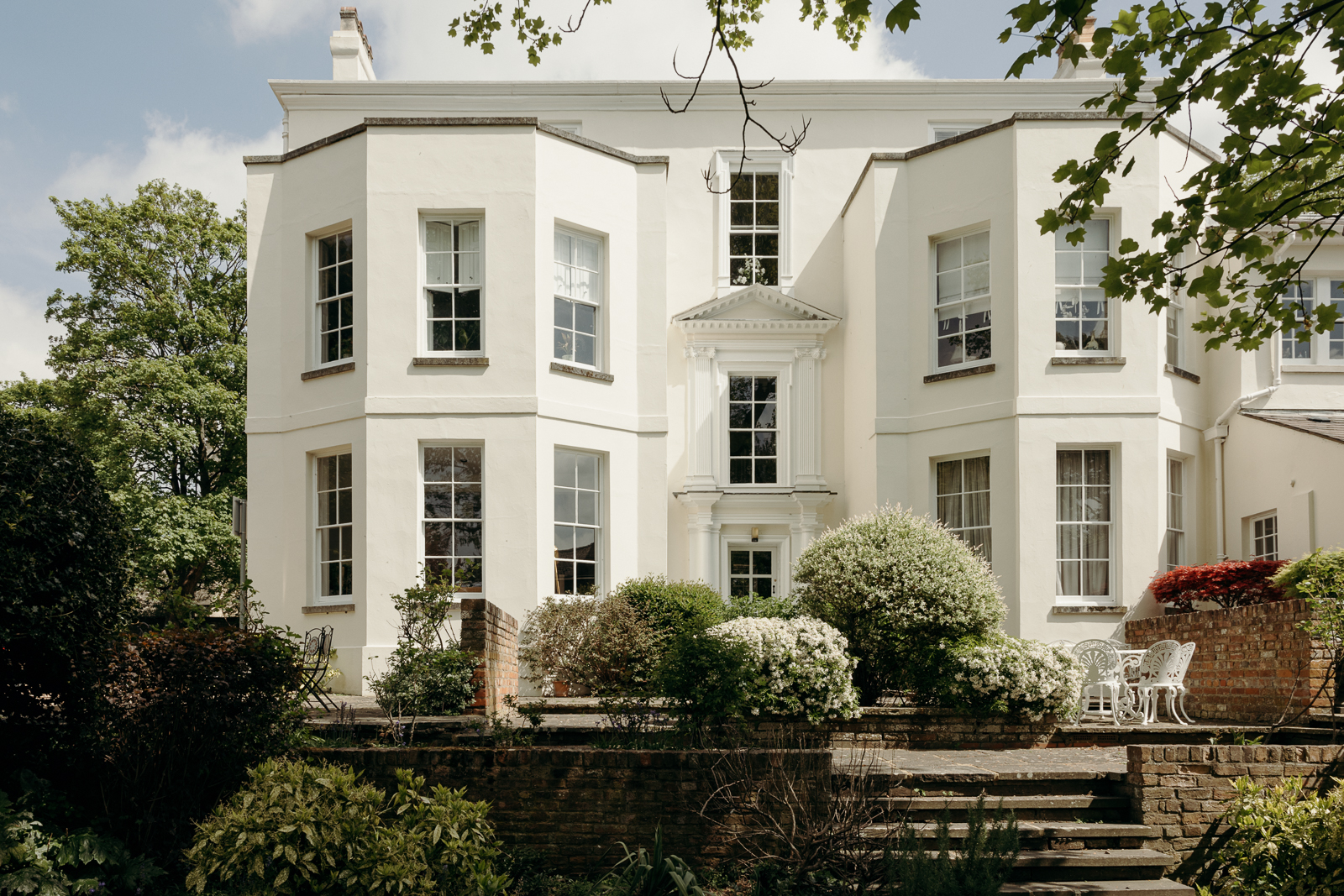The Grand Tour
Access to the manor house is via a brick-built gatehouse, incorporated by John Wilkes during his time at the home. A handsome stuccoed building, the entrance has grand classical proportions and is accessed beneath a portico of ionic columns. A communal hallway with a cantilevered staircase and intricately carved panelling leads to the second floor of the building, where the apartment unfolds laterally. Featuring generous ceiling heights and working shutters throughout, the spaces are bathed in natural light and offer far-reaching views of the surrounding countryside.
At the front of the plan is the large, dual-aspect drawing room, which is painted in calming, neutral tones. A beautiful arts and crafts fireplace provides a focal point to the room. The open-plan kitchen and living space is perfect for entertaining; a half-wall encloses the kitchen but allows conversations to continue while cooking. Picture windows frame far-reaching views of the Chiltern Hills, adding a sense of verdant serenity to the space.
Two generously sized bedrooms are off the main hallway, each with built-in storage, charming original fireplaces and views over the gables of Grade II*-listed St Mary’s Church.
Also radiating from the main hallway is a large family bathroom and separate guest WC. These spaces have been utilised to offer ample storage, perfect for hiding away life’s necessities.
The Great Outdoors
The expansive communal gardens unfold over approximately 1.25 acres. Awash with ancient trees and mature planting, the garden offers a perfect setting for entertaining or a morning coffee. Externally, there is a private, gated entrance and allocated secure parking.
Out and About
The apartment lies in a historic enclave of Aylesbury, awash with timber-framed buildings and quaint cobbled streets. Buckinghamshire nearby is a bustling market town with excellent amenities. There is an abundance of local supermarkets (Waitrose and Sainsbury’s), cafes and bakeries, while local restaurants, such as the nearby
Chequers Inn and
Five Elms, are some of the highest-rated gastro pubs in the area.
Just outside of the town is the National Trust-owned
Hartwell House and Spa. A Jacobean manor in some 90 acres of stunning parkland, it’s the perfect country house hotel with two AA Rosette restaurants and an expansive spa (housed in a former orangery). Additionally, amongst the Chiltern Hills (perfect for a Sunday stroll) are
Waddesdon Manor and
Claydon House, two great houses offering walking tours, weekend markets and family entertainment for the historically inclined.
Prebendal House has excellent access to public transport and lies within easy reach of Aylesbury Station, offering direct lines into London Marylebone within an hour. The A41 and M1 are a stone’s throw away, providing fast and direct routes into the city, whilst Heathrow airport is approximately a 40-minute drive away.
Tenure: Leasehold
Lease Length: approx. 103 years remaining
Service Charge: approx. £2,982 per annum
Ground Rent: approx. £225 per annum
Council Tax Band: D
